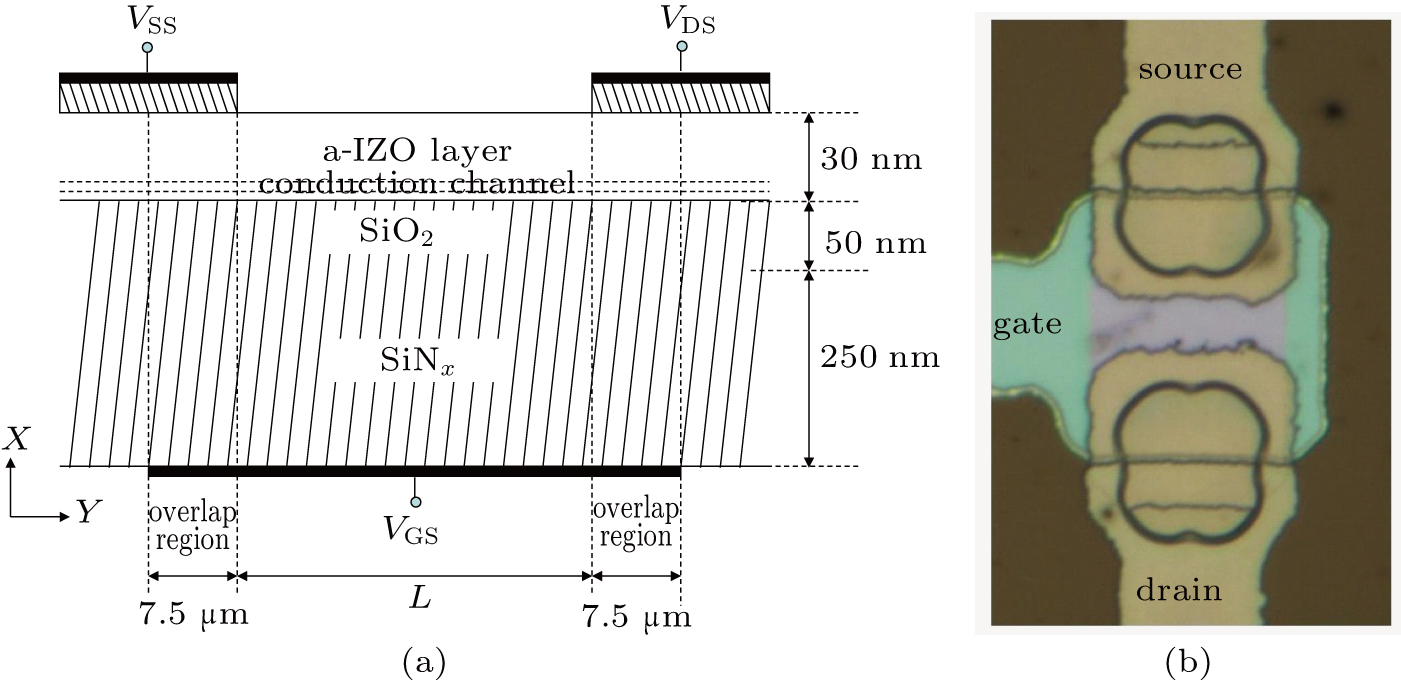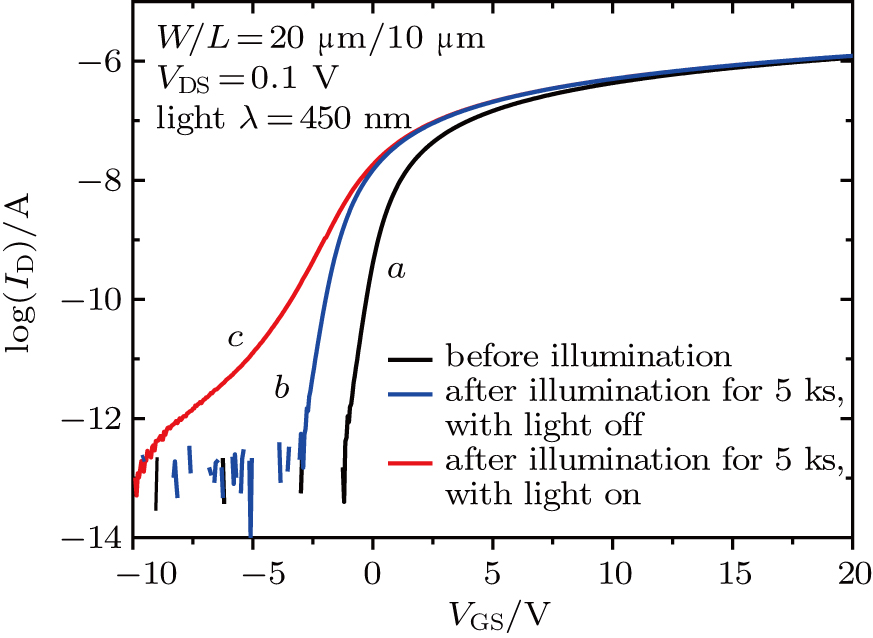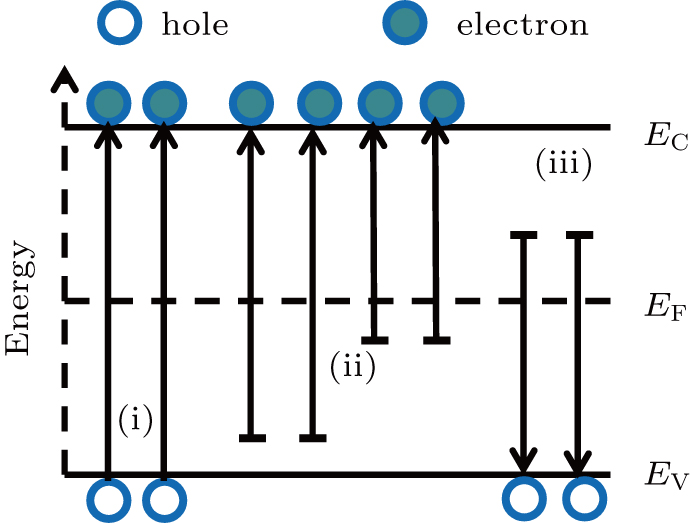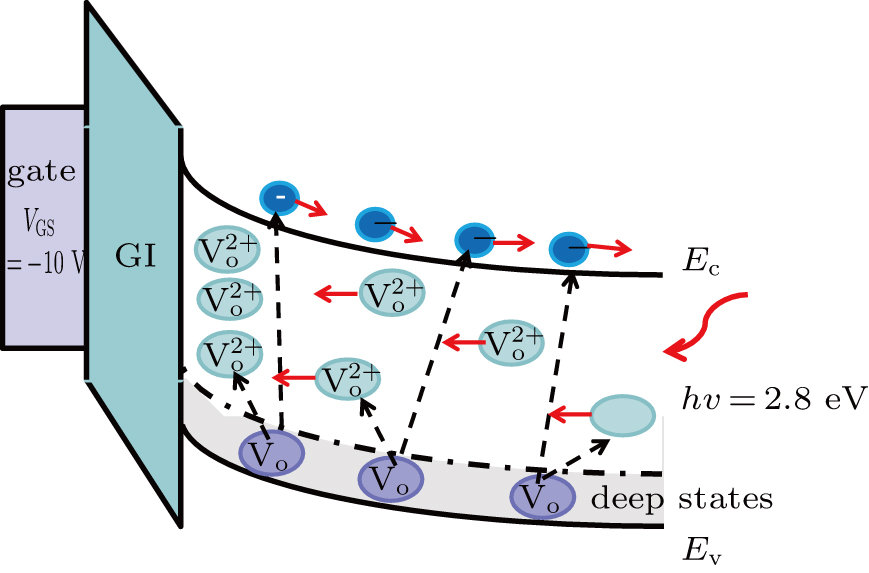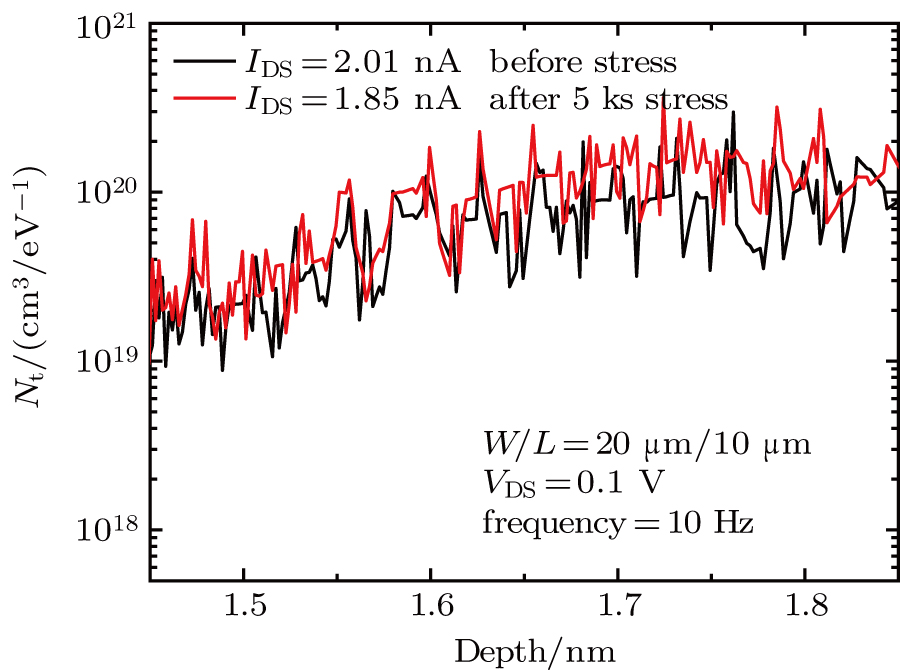Project supported by the Opening Fund of Key Laboratory of Silicon Device Technology, Chinese Academy of Sciences (Grant No. KLSDTJJ2018-6), the National Natural Science Foundation of China (Grant No. 61574048), the Science and Technology Research Project of Guangdong Province, China (Grant No. 2015B090912002), and the Pearl River S & T Nova Program of Guangzhou City, China (Grant No. 201710010172).
Project supported by the Opening Fund of Key Laboratory of Silicon Device Technology, Chinese Academy of Sciences (Grant No. KLSDTJJ2018-6), the National Natural Science Foundation of China (Grant No. 61574048), the Science and Technology Research Project of Guangdong Province, China (Grant No. 2015B090912002), and the Pearl River S & T Nova Program of Guangzhou City, China (Grant No. 201710010172).
† Corresponding author. E-mail:
Project supported by the Opening Fund of Key Laboratory of Silicon Device Technology, Chinese Academy of Sciences (Grant No. KLSDTJJ2018-6), the National Natural Science Foundation of China (Grant No. 61574048), the Science and Technology Research Project of Guangdong Province, China (Grant No. 2015B090912002), and the Pearl River S & T Nova Program of Guangzhou City, China (Grant No. 201710010172).
The instabilities of indium–zinc oxide thin film transistors under bias and/or illumination stress are studied in this paper. Firstly, illumination experiments are performed, which indicates the variations of current–voltage characteristics and electrical parameters (such as threshold voltage and sub-threshold swing) are dominated by the stress-induced ionized oxygen vacancies and acceptor-like states. The dependence of degradation on light wavelength is also investigated. More negative shift of threshold voltage and greater sub-threshold swing are observed with the decrease of light wavelength. Subsequently, a negative bias illumination stress experiment is carried out. The degradation of the device is aggravated due to the decrease of recombination effects between ionized oxygen vacancies and free carriers. Moreover, the contributions of ionized oxygen vacancies and acceptor-like states are separated by using the mid-gap method. In addition, ionized oxygen vacancies are partially recombined at room temperature and fully recombined at high temperature. Finally, low-frequency noise is measured before and after negative bias illumination stress. Experimental results show few variations of the oxide trapped charges are generated during stress, which is consistent with the proposed mechanism.
Due to its excellent electrical performance and good stability,[1] the amorphous indium zinc oxide thin film transistor (a-IZO TFT) is drawing a great deal of attention in the next generation of active matrix liquid crystal displays (AMLCD) and active matrix organic light emitting diodes (AMOLED).[2] During its application, the device may be exposed to variable environments, such as illumination, temperature, humidity, etc. As reported in Refs. [3]–[6], the electrical characteristics and the typical parameters of IZO TFTs may change in the above environments, which may further influence the performances of the image capture and display system. Moreover, IZO TFTs may be simultaneously subjected to diverse stresses. In particular, the degradation of the device under bias illumination stress may be more serious and thus it should be investigated before its application in the consumer market.
The instability of TFT under illumination and/or gate bias stress has been studied by many groups.[7–14] As reported, the notable degradations of current–voltage (I–V) and capacitance–voltage (C–V) characteristics have been studied under the above bias illumination stress.[12,13] These degeneration phenomena can be attributed to the formation of localized states and the fixed oxide trapped charges.[10,12] The formation of localized states mainly arises from the generation of ionized oxygen vacancies in the channel while the formation of oxide trapped charges is due to the occupation of neutral traps in the gate oxide.[13,14] However, few papers have reported the low frequency noise (LFN) characteristics of IZO TFTs after negative bias illumination stress (NBIS). The low frequency noise of the devices may limit the minimum signal level that can be correctly detected by the subsequent circuit. Moreover, the low frequency noise may be up-converted into phase noise and high frequency noise in some conditions, which may affect the linearly of an analog circuit.[15] Thus, the noise performance of IZO TFT needs to be analyzed and minimized.
Flicker (1/f) noise is a random fluctuation phenomenon in a semiconductor device and it is sensitive to semiconductor quality and device defects. As a non-destructive reliability characterization method, 1/f noise measurement has been widely used in the evaluation and selection of BJT, MOS, GaN, semiconductor lasers, and other devices.[16] In addition, the energy and spatial distribution of traps can be extracted and the degeneracy of the devices can be analyzed by 1/f noise.
In this paper, a series of experiments is performed to study the stabilities of IZO TFTs under illumination and/or electrical stress. The dependence of degradation characteristics on the illumination wavelength is also analyzed. The contributions of stresses induced ionized oxide vacancies (
The device under test is IZO TFT with bottom gate structure as shown in Fig.
The transfer characteristics of the device are shown in Fig.
Good stability of IZO TFT is shown in this experiment. The measured transfer curves of the device under NBS stress with VGS = −10 V are plotted in Fig.
The measurement setup of drain current noise power spectra of IZO TFTs is illustrated in Fig.
In this section, a series of illumination experiments were performed. The degradations of IZO TFTs under monochromatic illumination were studied. The dependence of degradation characteristic on wavelength was then analyzed. In this experiment, the used light intensity was 5 mW/cm2 and wavelengths were 635 nm, 515 nm, 450 nm, and 405 nm.
Transfer characteristics of IZO TFTs exposed to blue laser light (λ = 450 nm) are shown in Fig.
 |
As reported in Ref. [22], donor-like states and acceptor-like states may exist in the channel. The donor-like states are neutral because the occupied electrons and positive are neutralized while being emptied. The negative shift of I–V characteristic curve after illumination may relate to donor-like states (oxygen vacancies, Vo.[13] As reported in Refs. [23]–[25], a large number of Vo exist on the top of the valence band. The Fermi level in the IZO/SiO2 interface lowers nearly to midgap in a case with applying negative gate voltage. Therefore, oxygen vacancies can be photo-excited and become 


The notable sub-threshold currents observed under illumination are due to the optically generated free carriers. As shown in Fig.
The plots of log(ID) versus VGS in the IZO TFTs with the illumination of four different wavelengths are shown in Fig. 
Figure 


 | Fig. 8. (color online) Transfer curves of IZO TFT, measured under different illumination stress times. |
The variation of the threshold voltage during stress may simultaneously be affected by photo-generated ionized oxygen vacancies (with surface density Qov = qΔNov) and the generation of acceptor-like deep states in the IZO/SiO2 interface (with surface density Qdeep = qΔNdeep), and it can be expressed as[30]
 |
 |
 |
Here, μn is the electron mobility at room temperature, ε0 is the vacuum dielectric constant, ni is the carrier concentration at room temperature, and the value of φs at the midgap is 0. The value of sub-threshold current, calculated in VMG is about 3.88 × 10−10 A, which can be used to extract the value of ΔVMG. Then, the number of oxygen vacancies can also be extracted by using the midgap voltage. According to Eq. (
The extracted variations of oxygen vacancies and acceptor-like states in the channel layer are plotted in Fig. 
The annealing characteristics of IZO TFTs after NBIS are graphed in Fig. 




The curves of measured normalized drain current power spectral densities versus drain current before and after stress are shown in Fig.
 |
 | Fig. 13. (color online) Curves of normalized noise versus drain current power spectral density after NBIS. |
Based on Fig.
In order to have a qualitative spatial distribution of trapped charges in the gate oxide, the frequency is converted into the tunneling depth as follows:[36–39]
 |
Instability of IZO TFT under negative bias illumination stress has been discussed in this paper. The degradation effects of IZO TFT may be dominated by ionized oxygen vacancies. More negative shifts of threshold voltage under illumination can be observed with the decrease of light wavelength. Furthermore, electrons captured by acceptor-like states below Fermi-level may be photo-excited and thus lead to the increase of sub-threshold current and sub-threshold swing. In addition, LFN measurement is performed before and after negative bias illumination stress separately. Indistinguishable variation in spatial distribution of oxide trapped charges is observed after stress, which is consistent with the proposed degradation mechanism.
| [1] | |
| [2] | |
| [3] | |
| [4] | |
| [5] | |
| [6] | |
| [7] | |
| [8] | |
| [9] | |
| [10] | |
| [11] | |
| [12] | |
| [13] | |
| [14] | |
| [15] | |
| [16] | |
| [17] | |
| [18] | |
| [19] | |
| [20] | |
| [21] | |
| [22] | |
| [23] | |
| [24] | |
| [25] | |
| [26] | |
| [27] | |
| [28] | |
| [29] | |
| [30] | |
| [31] | |
| [32] | |
| [33] | |
| [34] | |
| [35] | |
| [36] | |
| [37] | |
| [38] | |
| [39] |


